Our Academy
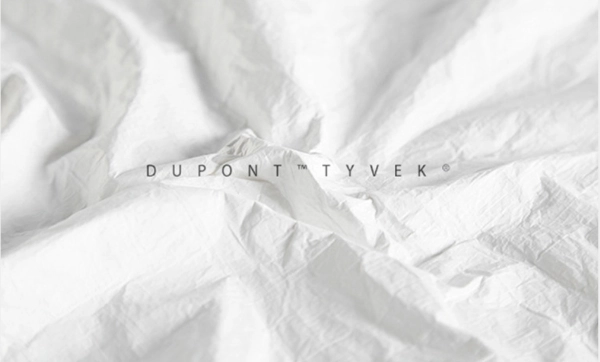
When sourcing bag packaging materials, many brands struggle with issues like insufficient durability, lackluster appearance, or materials that fall short of sustainability goals.
Tyvek offers a lightweight, water-resistant, tear-resistant solution with a unique texture—filling the gap between functional performance and brand presentation that traditional materials often leave behind.
So what exactly are Tyvek bags, how are they used, and why they are matter?Tyvek bags are made from high-density polyethylene fibers through a heat-pressing process. This nonwoven material is known for being lightweight, water-resistant, tear-resistant, and fully recyclable. It’s widely used in gift packaging, promotional events, food delivery, and retail display scenarios—offering both structural strength and a distinctive paper-like appearance. Thanks to their excellent print compatibility, long-lasting usability, and eco-friendly properties, Tyvek bags have become a top choice for brands that want packaging to reflect both practicality and a responsible image.
While we’ve outlined the common uses of Tyvek bags, each style performs differently in real-world applications. Keep reading to explore the key features and usage tips of various Tyvek bag styles—and find the one that best fits your brand’s needs.
Tyvek is made from 100% high-density polyethylene fibers. The production process involves spinning the fibers and then bonding them together using heat and pressure, creating a nonwoven material that is incredibly strong and durable.
Tyvek® is recyclable, and its production has a lower environmental impact than other materials. It can be recycled into products like park benches and playground equipment.
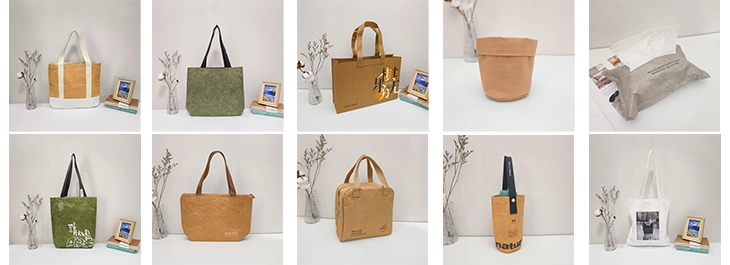
The history of Tyvek bags dates back to 1955 when researchers discovered a high-density polyethylene fiber, combining lightness and strength. In 1967, DuPont launched Tyvek, a nonwoven fabric with the properties of paper, film, and fabric, which quickly became popular in industrial packaging. By the 1970s, Tyvek bags were used for document and medical packaging. In the 1980s, they gained popularity as shopping and gift bags. With the rise of environmental awareness in the late 20th century, Tyvek’s recyclability and durability made it widely used in shopping, logistics, and fashion. Today, DuPont paper bags1 continue to evolve with eco-friendly designs and applications.
Tyvek bags are tear-resistant and suitable for repeated use. True
Tyvek material resists tearing and abrasion, making the bags durable enough for daily use in shopping or outdoor activities.
Tyvek bags are fully biodegradable. False
Tyvek is made from high-density polyethylene (HDPE), a recyclable plastic, but it does not naturally break down like cotton or jute.
Tyvek bags combine multiple advantages such as being lightweight, waterproof, durable, and recyclable. These qualities make them highly suitable for a wide range of applications—from retail packaging to brand promotions. Below, we break down their key benefits from both material performance and business value perspectives.
Tyvek bags have a smooth, flat surface that resists dust, oil, and other stains. Even if they get dirty, a simple wipe with a damp cloth is usually enough to restore their clean look. Since the material doesn’t absorb water or fray at the edges, cleaning them won’t affect their structure or appearance. Compared to cloth bags that require washing and drying—or paper bags that deform easily—Tyvek bags offer a much more convenient and efficient maintenance experience.
Tyvek is highly tear- and abrasion-resistant. Even with frequent use or uneven force, the bags hold their shape well. The tightly packed and flexible fibers help prevent common damage like creases, rips, or worn corners. Whether used for long-term storage or daily carrying, Tyvek bags maintain their physical integrity over time.

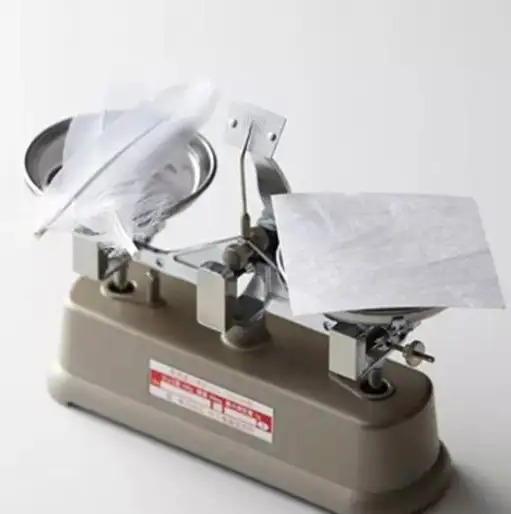
Compared to materials like canvas or non-woven fabric, Tyvek has a lower weight per unit area and feels noticeably lighter in hand. Even when the bag is fully loaded, it adds minimal burden. This lightweight nature comes from the fine microfibers in high-density polyethylene, which strike a balance between strength and reduced thickness.
Made from 100% high-density polyethylene, Tyvek bags have a single-material structure that can be recycled in some municipal systems. Unlike multilayer composites, Tyvek is easier and less costly to process after use. This makes it a smart option for brands looking to meet basic sustainability goals without compromising performance.
The natural fiber structure of Tyvek repels water, preventing liquids from seeping through the bag. Its surface also resists oil and fingerprints, keeping it clean with minimal maintenance. What’s more, Tyvek achieves these protective qualities without needing additional coatings or lamination—streamlining production and reducing environmental impact.
Tyvek’s smooth, dense surface works well with various printing techniques. It accurately reproduces detailed graphics and rich colors, giving your designs strong visual impact. The material’s opacity and paper-like texture enhance the printed image, helping brand visuals stand out. And because the prints resist fading and bleeding, Tyvek is ideal for high-exposure promotional uses.
Tyvek bags are both recyclable and reusable, making them a practical alternative to disposable plastic or laminated bags. Their textured, paper-like look naturally communicates an eco-conscious brand image. For companies emphasizing sustainability, Tyvek provides a material that aligns seamlessly with their messaging.
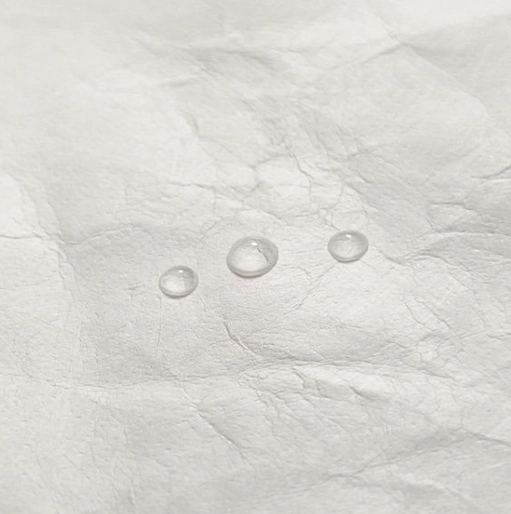
Even though it repels water, Tyvek still allows air to pass through in small amounts—thanks to its nonwoven structure. This breathability helps regulate humidity inside the bag, making it suitable for items that need to stay dry but not sealed off completely. It’s a rare combination that enhances usability for specific products.
Tyvek can be cut, sewn, and assembled into many different bag shapes and styles. Its moderate stiffness and good shape retention make it ideal for tote bags, backpacks, foldable carriers, and more. This versatility opens up creative possibilities for both consumer and commercial packaging needs2.
Even after multiple folds, Tyvek bags stay smooth and intact without breaking down or showing obvious creases. They can be opened, closed, and stored repeatedly without damage. The material’s flexibility and memory balance make Tyvek bags perfect for people who value convenience and compact storage.
Tyvek naturally resists UV radiation. Even with prolonged sun exposure, printed patterns and brand graphics retain their clarity and don’t fade easily. This makes Tyvek a reliable choice for outdoor packaging and long-term retail display where visual appeal matters.
Tyvek has a distinctive look and feel—combining the organic texture of paper with the resilience of fabric. Its matte surface and subtle creasing give it a minimalist yet high-end style that stands out from conventional plastic or textile bags. This signature look adds visual character and strengthens brand recognition.
Here are two different types of Tyvek products used in design and consumer applications: paper-like hard structure and fabric-like soft structure. Each comes in multiple grades for selection.
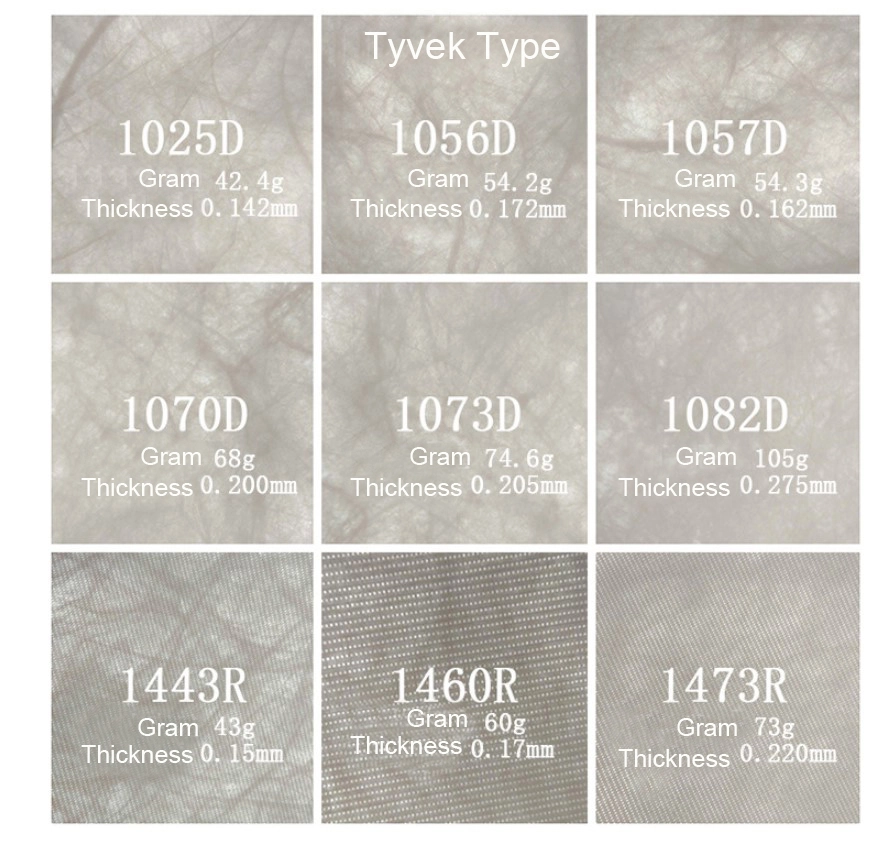
Both series are suitable for printing, sewing, gluing, and ultrasonic welding.
Both types undergo anti-static treatment and corona treatment. The anti-static treatment reduces static buildup during processing, while the corona treatment enhances the adhesion of ink, coatings, and glue.
After understanding the characteristics of various materials, let’s explore whether Tyvek is a suitable choice for making bags. Given its unique properties and numerous benefits, Tyvek is an excellent material for bag production.
DuPont paper bags, with their unique waterproof, tear-resistant, and UV-resistant properties, are ideal for outdoor shopping or humid environments. Compared to regular fabric or non-woven bags, DuPont paper bags are less likely to be damaged in rainy, sun-exposed, or damp conditions. They are reusable and perfect for daily shopping, especially in situations where moisture resistance is needed.
The high-density polyethylene structure of Tyvek® makes DuPont paper bags more durable than regular fabric and non-woven bags, making them resistant to tearing or damage. DuPont paper bags maintain the integrity of printed graphics, ensuring that brand logos are clearly visible. Whether used for event giveaways or long-term use, they provide continuous brand exposure.
DuPont paper bags are extremely lightweight yet strong enough to carry heavier gifts without easily bending or breaking. This makes them a special choice for gift bags, as they won’t add extra weight to the gift while maintaining a high level of aesthetics and durability. They provide an eco-friendly and high-end alternative for gift packaging.
For food packaging that requires both waterproofing and breathability, DuPont paper bags offer distinct advantages. Their material is both waterproof and breathable, helping maintain the freshness of food without causing condensation. Whether for frozen foods, baked goods, or takeout, DuPont paper bags effectively protect the food while keeping the inside environment dry and clean.
At large events like conferences, trade shows, or marathons, DuPont paper bags’ tear-resistant feature allows them to safely carry promotional materials and gifts without easily tearing. Compared to regular plastic or non-woven bags, DuPont paper bags can withstand more pulling and wear. After the event, these bags can continue to be used, extending brand exposure.
DuPont paper bags are UV-resistant, fade-resistant, and chemically resistant, making them perfect for packaging high-end products. Even with long-term exposure to sunlight or contact with chemicals, DuPont paper bags retain their clear printing and shape. This durability makes them stand out in retail packaging, particularly for high-end products that require long-term display.
Tyvek is
waterproof and durable3, making it easy to clean and maintain. It can be simply wiped or lightly washed after becoming dirty without affecting its material or appearance. This repeat-cleaning and long-lasting characteristic aligns with the needs of eco-friendly bags, offering a more durable option compared to regular fabric or non-woven bags.
DuPont paper bags have a smooth surface that is ideal for high-definition printing, allowing for detailed designs that elevate the brand’s upscale feel. Their unique texture and paper-like touch convey an impression of innovation and sustainability, making them perfect for high-end events like art exhibitions, fashion shows, or product launches, enhancing the professionalism and stylishness of the event.
Although printing on Tyvek can be tricky due to its unique surface properties, it still supports several mainstream printing techniques. The most widely used include silkscreen, heat transfer, and UV digital printing. Each technique suits different types of artwork and customization needs. Here’s a closer look:
Silkscreen printing applies solid ink in layers, producing bold color blocks and sharp edges. It works well for minimal brand logos, graphic icons, or designs with only a few colors. This method is cost-effective and efficient, making it ideal for high-volume promotional bags. However, it’s not suitable for complex or multi-color artwork.
Heat transfer uses high temperature to apply pre-printed images onto the surface of Tyvek. It captures detailed visuals with smooth gradients and vibrant tones. This method is a good choice for full-color logos, illustrations, or realistic images like portraits or pets. It offers great print quality, though the process tends to be more costly.
UV digital printing cures ink directly on the Tyvek surface through ultraviolet light. It supports large, detailed artwork such as full-page visuals or illustrative designs. The output is clear and layered, without the need for plates. Compared to heat transfer, the color saturation is slightly lower, so it’s not the best option for photo-realistic effects.
Tyvek bags are highly suitable for brand customization and promotional printing. True
Tyvek’s surface supports high-quality logo and slogan printing, making it ideal for promotional and event bags.
Tyvek bags can be recycled in standard curbside recycling programs. False
Although Tyvek is recyclable, it often requires specialized recycling facilities and is not accepted in most curbside programs.
Tyvek bags offer excellent flexibility in design. Depending on the bag type, they can vary significantly in structure, material combinations, and load capacity. Below is a breakdown of 12 popular Tyvek bag styles—from simple daily-use models to more complex, customized designs. This overview is designed to help you quickly understand the main structure types and their typical use cases.
If you are looking for something lightweight or want to reduce costs, flat Tyvek bags are the best choice. These bags often use a polyester or no lining, making the final product extremely lightweight. Tyvek bags look like they are made of thin paper but are very durable and tear-resistant. They are lightweight and stylish, with a sleek and modern appearance. The high cost-performance ratio makes them great for DIY projects as well.
Another advantage of flat Tyvek bags is their extreme portability. They can be folded into a tiny size when not in use, making them easy to store and carry.
Tyvek material is less rigid than non-woven fabric and woven bags, making it ideal for bottom gusset bags. Although the design is simple, it is highly practical. The bottom gusset design allows the bag to hold more items, making it perfect for shopping and daily use. These bags are stylish and highly functional, making them one of the most popular Tyvek bag styles. Many businesses choose these Tyvek bags for promotional events.
You can choose from various linings, such as sturdy cotton, cost-effective polyester, or a minimalist no-lining design. Additional customizations, such as inner pockets, magnetic closures, Velcro, and zippers, can also be added.
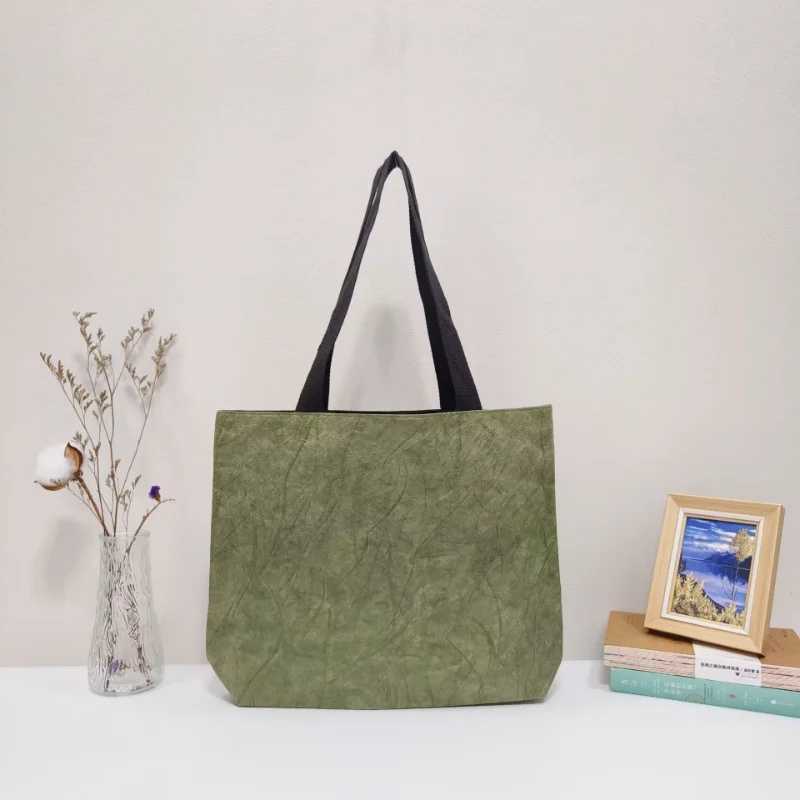
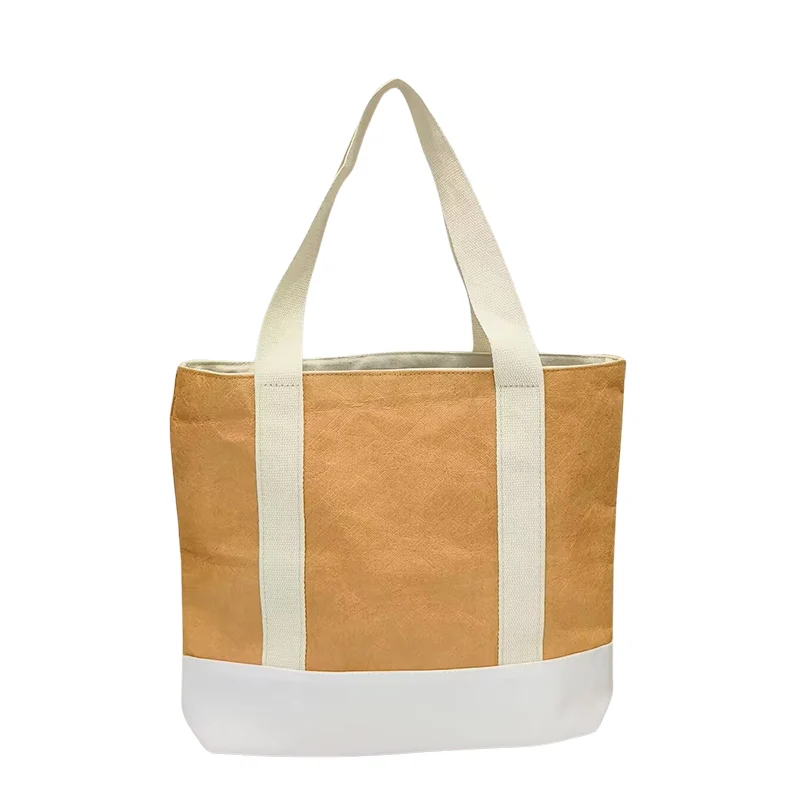
This Tyvek bag features a reinforced handle design, making it suitable for heavier loads. It usually comes with a wide bottom structure, providing both ample capacity and improved stability. Whether used for everyday shopping, gift packaging, or as a branded retail bag, it’s a practical option.
The reinforced handles are typically sewn or internally reinforced to withstand higher tension without breaking. Combined with Tyvek’s lightweight and water-resistant properties, this bag offers a well-balanced solution in both function and appearance.
Tyvek drawstring bags are thinner than cotton bags, more waterproof than polyester bags, and more upscale than non-woven bags. They combine the tactile feel of paper with the characteristics of fabric. These bags are ideal for gym bags, storage bags, or organizing small items with other storage containers. They are also perfect for children to use as simple drawstring backpacks and can be customized with DIY designs or logos. They are waterproof and stylish.


This Tyvek drawstring bag adds carry handles to the classic cinch-top design, making it easy to carry by hand or wear on your back. The simple, lightweight structure is perfect for occasions that require frequent opening and carrying.
Many brands use this style for gym kits, travel organizers, or on-the-go promotional giveaways. The drawstrings are typically made of polyester cords, and when combined with Tyvek’s lightweight and water-resistant properties, the result is both practical and premium in feel.
Tyvek cooler bags are typically lined with aluminum foil or pearl cotton to provide effective insulation for keeping food hot or cold. Lightweight and water-resistant, they are ideal for food delivery, lunch carrying, or outdoor picnics, and are often used in brand promotions related to the food industry.
These bags come in over ten variations, including handheld and zippered designs, with a clean look and practical functions. The unique paper-like texture and splash-resistant surface of Tyvek help convey both functionality and a modern, eco-conscious brand image.
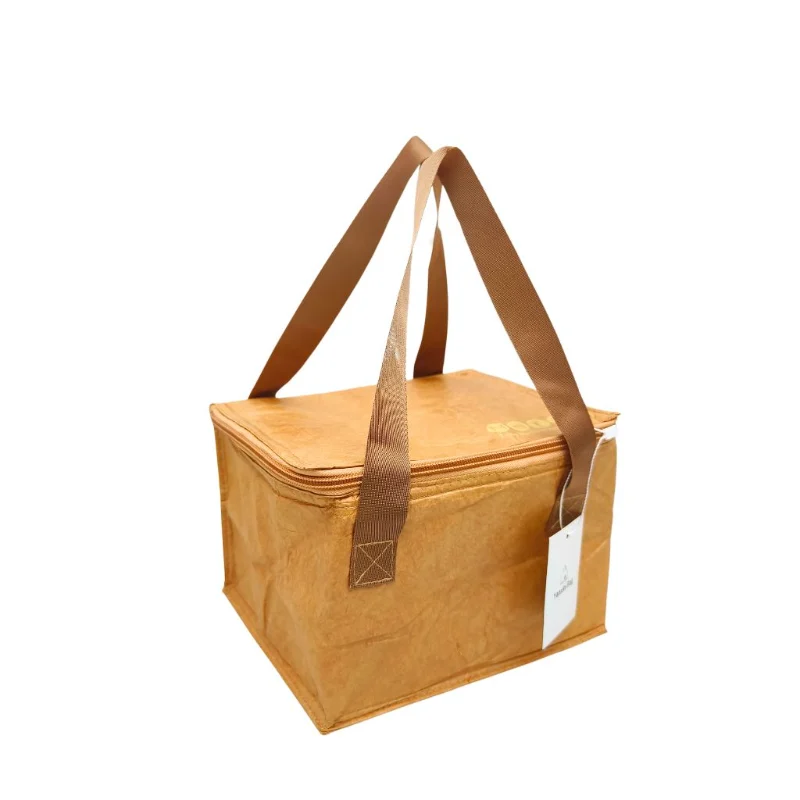
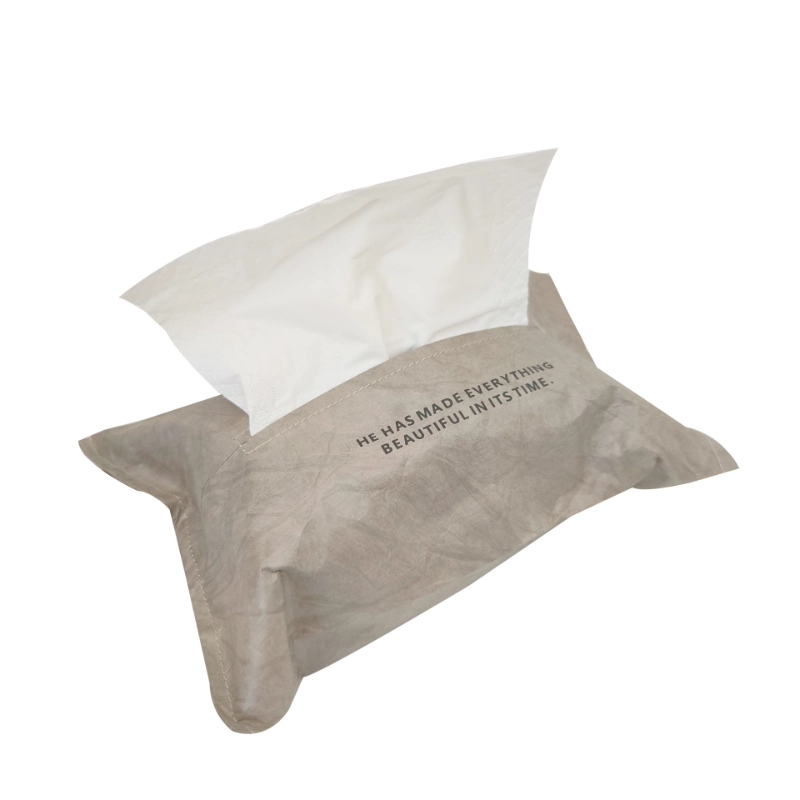
Tyvek tissue box covers feature a sleek, structured look and minimalist design, making them ideal for modern homes, offices, and creative retail spaces. The unique paper-like texture of Tyvek adds a refined aesthetic that enhances the overall atmosphere.
Compared to traditional plastic or fabric covers, Tyvek offers advantages such as water resistance, easy cleaning, and shape retention—making it suitable for both long-term use and seasonal replacements. Common structures include rectangular and cube shapes, with sizing easily customized to fit different tissue boxes. The design is clean yet distinctive, blending effortlessly into a variety of interior styles.
The Tyvek pencil case is compact in size and typically features a zipper closure. Some versions come with a transparent PVC outer layer to enhance structure and water resistance. This type of bag is not only great for storing stationery but is also widely used for promotional giveaways, student supplies, or creative retail packaging.
Lightweight yet durable, it offers excellent printability—ideal for showcasing brand logos or artistic designs. With its clean, modern look, this pencil case strikes a balance between functionality and visual appeal, making it a smart choice for both practical use and brand promotion.

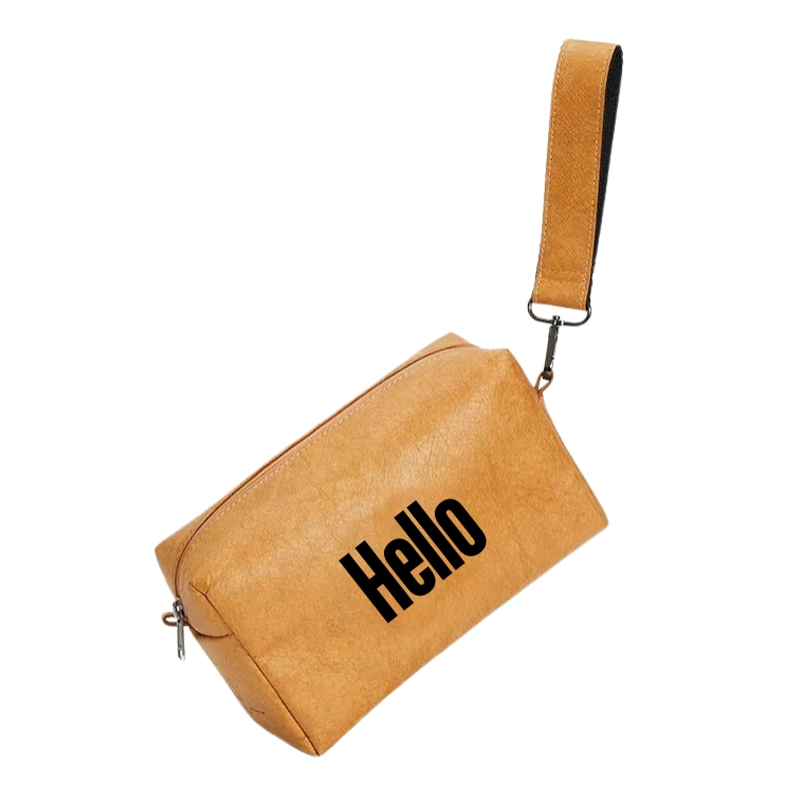
This type of Tyvek makeup bag is typically made from soft Tyvek laminated with non-woven fabric, creating a lightweight pouch with a subtle, leather-like texture. Compared to pencil cases, the structure is more three-dimensional, offering just the right amount of space for daily skincare and cosmetic essentials. A zipper closure is commonly used for easy access and secure sealing.
Thanks to its water-resistant surface, sleek appearance, and refined feel, this bag is a great fit for beauty giveaways, cosmetic gift sets, or high-end promotional packaging—combining practicality with strong brand presentation.
Don’t think that a backpack made of paper won’t be sturdy. Tyvek backpacks are so lightweight that you can hardly feel their weight, yet they function like a regular backpack. The surface of a Tyvek backpack is waterproof, and its unique design and style will turn heads on the street. They are stylish and practical, making them suitable for students and office workers. Tyvek backpacks are the perfect combination of eco-friendliness and fashion. These backpacks usually have a simple and modern design, which aligns well with current fashion trends. The unique texture of Tyvek adds a premium feel to the backpack while keeping it lightweight.
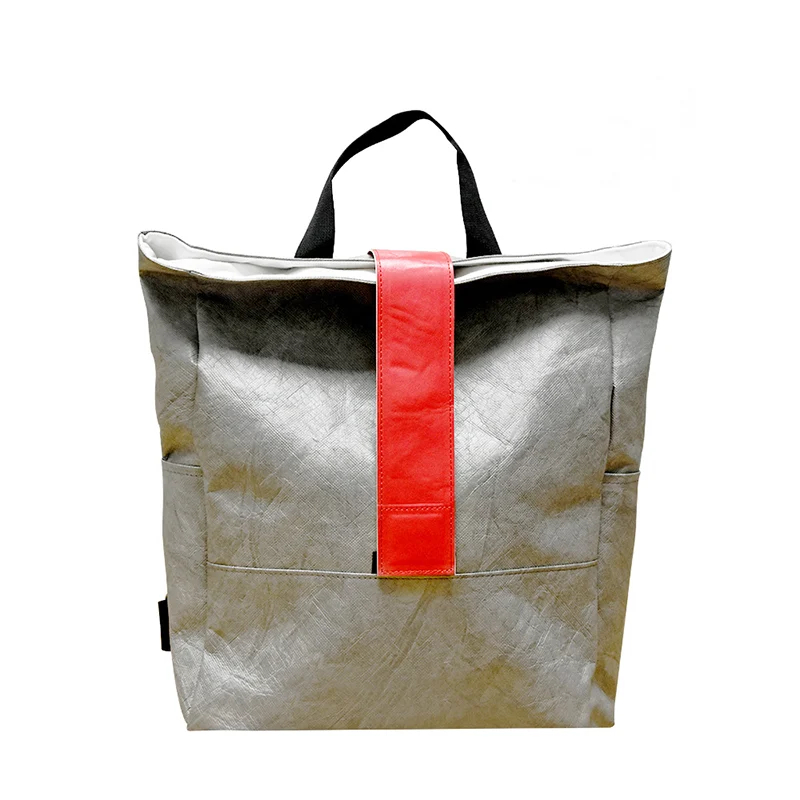
These Tyvek bottle bags are typically made from soft Tyvek laminated with nonwoven fabric, offering a leather-like texture that’s both lightweight and flexible. Most are designed to fit a single bottle, with a built-in handle at the top for easy carrying and presentation.
The water-resistant and structured nature of Tyvek makes it ideal for custom printing, allowing brands to showcase their logo or design. Whether used by wineries, in premium retail settings, or for festive gift packaging, these bags combine visual appeal with sustainability, enhancing both product presentation and brand identity.
Tyvek bags are UV resistant and do not fade easily under sunlight. True
Tyvek material resists UV rays, helping the bags retain their color and printed designs even with prolonged sun exposure.
All Tyvek bags come with waterproof inner linings. False
Some Tyvek bags are unlined and rely on the material’s natural water resistance; inner linings are optional and vary by design.
While Tyvek bags are water-resistant and tear-resistant, that doesn’t mean they can be cleaned without care. Improper methods—like machine drying or using harsh chemicals—can damage the bag’s structure or appearance. To help you extend the lifespan of your Tyvek bags, here’s a quick comparison chart of cleaning methods you should and shouldn’t use.
| Cleaning Method | Recommended? | Notes |
|---|---|---|
| Wiping with a damp cloth | ✅ Yes | Best for daily maintenance and light stains |
| Hand washing with cold water | ✅ Yes | Use mild detergent; suitable for bags with linings |
| Machine washing (gentle cycle) | ⚠️ Caution | Only if label allows; protect with laundry bag |
| Tumble drying | ❌ No | Heat can warp or shrink Tyvek |
| Direct sunlight drying | ❌ No | May cause brittleness or fading over time |
| Ironing | ❌ No | Tyvek is heat-sensitive; ironing can melt the surface |
| Harsh chemicals (bleach, alcohol) | ❌ No | Can damage texture and print; avoid completely |
| Scrubbing with rough materials | ❌ No | May leave scratches or permanent marks |
For a full step-by-step guide on cleaning, drying, and storage, check out our dedicated article: How to Clean and Maintain Tyvek Bags for Long-term Use.
Customizing Tyvek bags involves more than just choosing a size or printing a logo. To create a bag that fits your functional needs and brand image, it’s important to plan across several key areas—such as materials, structure, printing, closures, and accessories. Here’s a quick overview to help you get started.
Start by identifying the use case and intended users of the bag. Will it be used to carry customer purchases or distributed as internal corporate materials? Are you emphasizing sustainability, or aiming for a standout visual design? These factors will influence decisions around bag size, structure, printing method, and accessories.
Tyvek comes in two common types: hard Tyvek with a paper-like texture, and soft Tyvek with a fabric-like feel. Some styles may also be laminated with nonwoven fabric to improve texture and strength. In terms of structure, you can choose from combinations like with/without bottom gusset, with/without side panels, based on the desired capacity and application. More structured designs offer greater volume and load-bearing capacity, while flat styles are easier to store and transport.
Tyvek is compatible with various printing techniques such as silkscreen, heat transfer, and UV printing. For complex or gradient-color designs, heat transfer is recommended. If you’re aiming for cost efficiency, single-color silkscreen is more economical. UV printing works well for full-surface graphics. As for closures, zippers, Velcro, and magnetic snaps are all viable, and can be selected based on your product positioning and user preferences.
Consider whether you need linings, internal compartments, reinforced handles, or hang tags—these details will impact user experience and enhance perceived brand value. We recommend sharing sketches or functional requirements early in the process, so we can assist with tailored sampling and evaluation.
For a more detailed explanation of each step and design consideration, check out our full guide:
Essential Tips for Custom Tyvek Bags: A Step-by-Step Guide.
Tyvek bags strike a unique balance between functionality, durability, and visual appeal—making them a smart choice for brands seeking practical yet sustainable packaging. From everyday totes to eye-catching gift bags, their versatility spans across industries and occasions.
Whether you’re looking to promote your brand, enhance product presentation, or offer eco-friendly alternatives to traditional packaging, Tyvek bags provide a wide range of options in terms of material feel, structure, and customization potential. By understanding their features and selecting the right style and design, you can create packaging that not only delivers on performance but also reflects your brand values.
Want to make your Tyvek bags last longer?
Learn the best ways to clean and care for Tyvek to ensure they stay in top condition.
➡️ 《How to Clean and Maintain Tyvek Bags for Long-term Use》
Curious about the best ways to print on Tyvek?
We explain the top 3 printing methods to help your brand look its best on this unique material.
➡️ 《How to Print on Tyvek Bags: Top 3 Best Methods Explained》
Thinking about customizing your own Tyvek bags?
This step-by-step guide walks you through materials, printing tips, and common mistakes to avoid.
➡️ 《Essential Tips for Custom Tyvek Bags: A Step-by-Step Guide》
Need inspiration for styles and uses?
Discover the most popular Tyvek bag styles and how businesses use them every day.
➡️ 《Tyvek Bags: Top Benefits, Popular Styles & Everyday Business Uses》
Get a free quote and expert consultation today. Let’s bring your brand vision to life.
1 This sustainability report from DuPont, the material’s creator, details the company’s progress and goals for environmental stewardship.
2 Discover how forward-thinking companies are meeting commercial packaging needs sustainably. The FSC’s Sustainable Packaging Solutions for Businesses outlines proven strategies for balancing environmental goals with brand and operational efficiency.
3 DuPont’s official Why Tyvek guide explains the science behind its waterproof and durable properties, detailing how its high-density polyethylene structure provides strength, water resistance, and long-term performance.
Note: Tyvek® and DuPont™ are trademarks or registered trademarks of Dupont or affiliated companies of DuPont.
Answer: Tyvek bags are made from high-density polyethylene (HDPE) fibers that are spun and bonded under heat and pressure. This creates a unique material that is lightweight, durable, tear-resistant, and water-resistant.
Answer: Popular Tyvek bag styles include bottom gusset totes, flat bags, backpacks, drawstring pouches, zipper bags, and insulated cooler bags. Each style offers different advantages based on structure and usage scenarios.
Answer: To customize Tyvek bags, consider your usage scenario and audience first. Then choose the appropriate Tyvek material (hard or soft), bag structure, printing method, closure type, and optional accessories like lining or pockets.
Answer: Yes. DuPont paper, or Tyvek, is inherently water-resistant, making it ideal for products like lunch bags, cooler bags, and packaging for skincare or cosmetics.
Answer: Hard Tyvek has a paper-like texture and appearance, often used for envelopes or flat bags. Soft Tyvek has a fabric-like feel and is more flexible, suitable for backpacks, drawstring bags, and other sewn applications.
Answer: Yes. Tyvek supports screen printing, heat transfer, and UV printing. For detailed or gradient designs, heat transfer printing is recommended. For simple logos and cost-effective production, screen printing works well.
Answer: Yes. Tyvek is recyclable under the #2 HDPE stream and is free from plasticizers or binders. Its durability also allows reuse, aligning well with sustainable packaging goals.
Answer: While Tyvek is water-resistant and durable, machine washing is not recommended as it may affect the structure or printed surface. Gently wipe with a damp cloth instead.
Answer: Tyvek zipper pouches are lighter and more eco-friendly than PVC, yet offer a distinctive texture and premium feel. Compared to nylon, they may have lower stretchability but a more paper-like aesthetic.
Answer: Yanxin Bag is a professional Tyvek bag manufacturer based in China, offering custom solutions with low MOQs, fast turnaround, and a wide variety of styles including Tyvek tote bags, drawstring bags, and wine bottle sleeves.

Order or no-order we are Always here to help you!
We will contact you within 1 working day, please pay attention to the email with the suffix “@yanxinbag.com”.
Order or no-order we are Always here to help you!
We will contact you within 1 working day, please pay attention to the email with the suffix “@yanxinbag.com”.